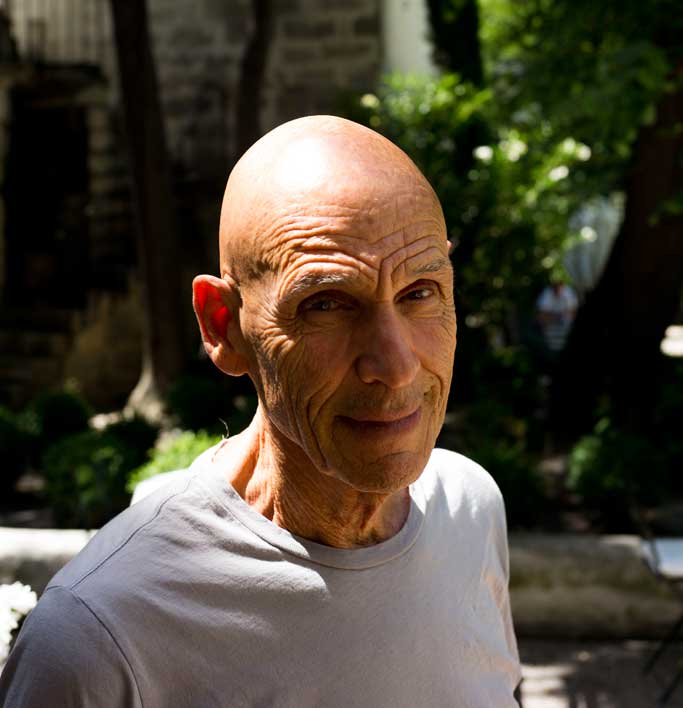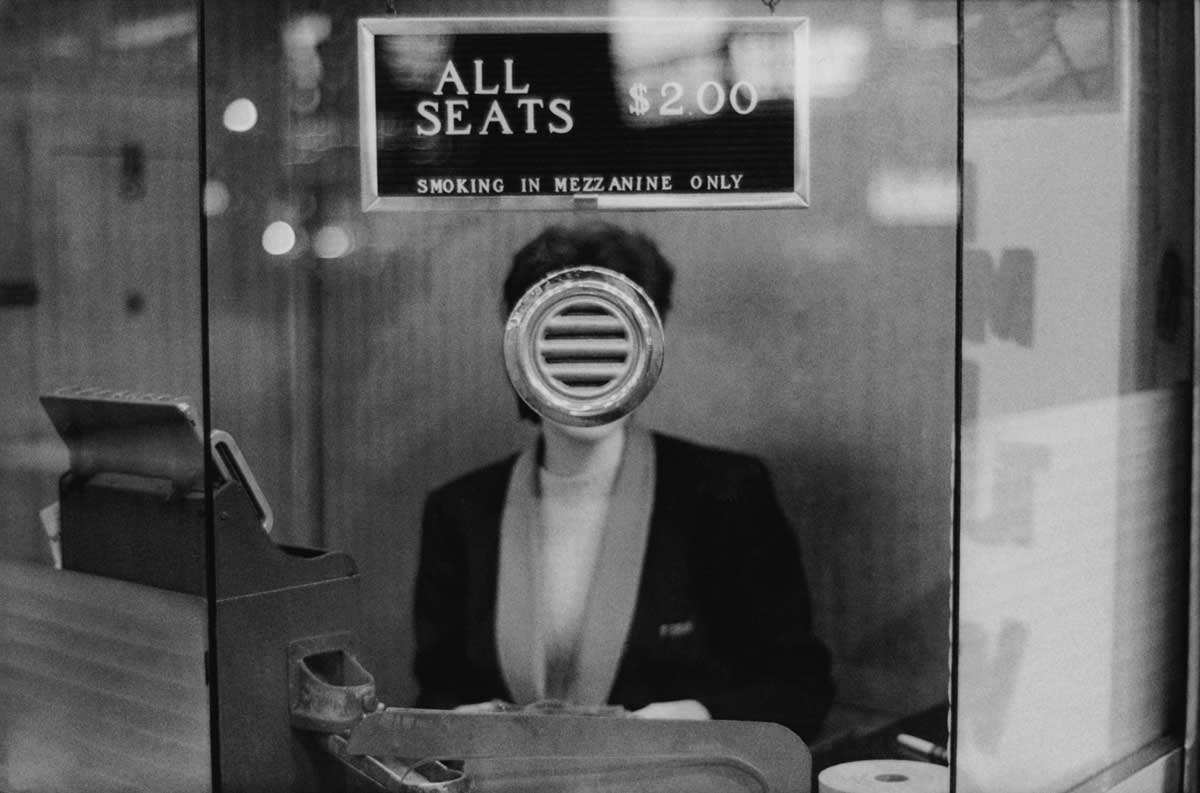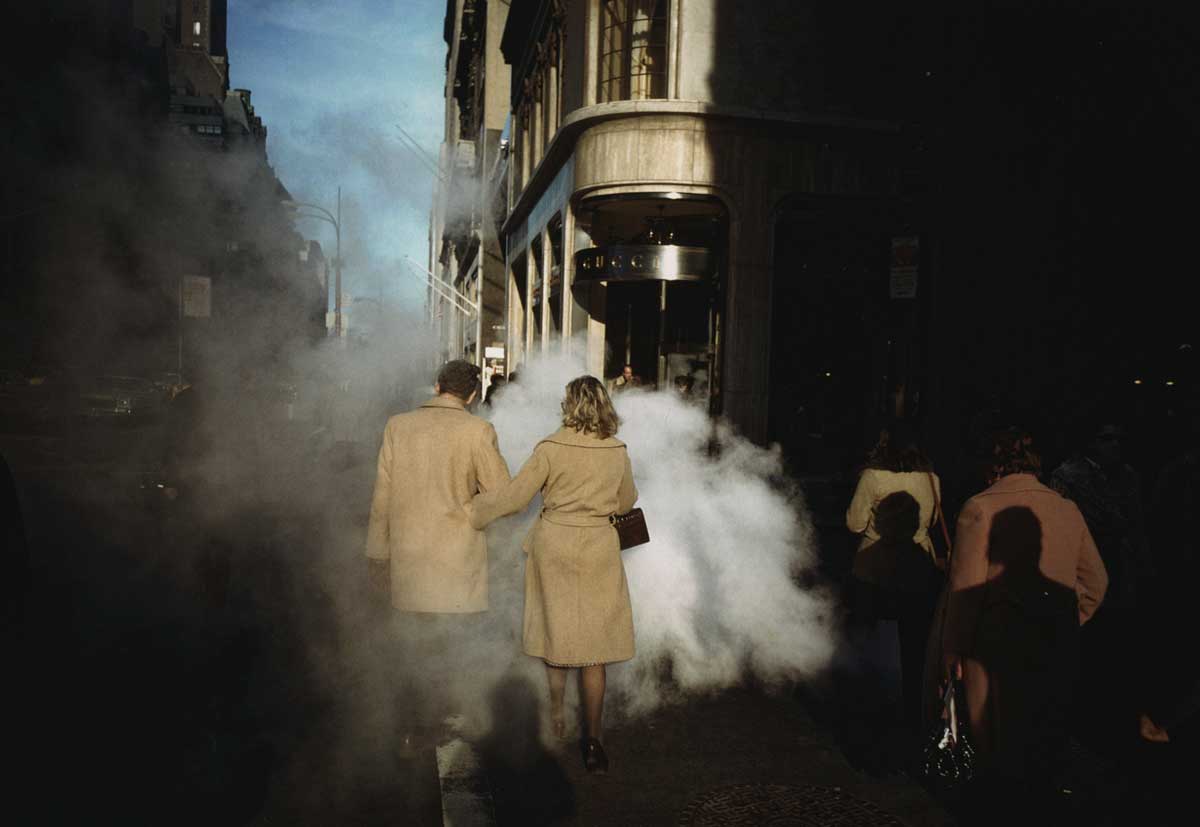SPECIAL INTERVIEW WITH
JOEL MEYEROWITZ
BY SEBI BERENS

SPECIAL INTERVIEW WITH JOEL MEYEROWITZ
BY SEBI BERENS
JOEL MEYEROWITZ Born in 1938,
New York, United States. Lives and works in New York, United States. With his career beginning in 1962 and with being famous for his complex compositions, you can be sure that the American color photography master, Joel Meyerowitz, knows how to act invisible on the streets. He has always seen himself as a street photographer in the tradition of Henri Cartier-Bresson and Robert Frank, the co-author of the standard work on the genre, Bystander: A History of Street Photography, Bulfinch Press, 1994. He transformed the mode with his pioneering use of color. Meyerowitz is an award-winning photographer whose work has appeared in over 350 exhibitions in museums and galleries around the world. For the first time, the Recontres dArles festival shows forty original prints by Joel Meyerowitz, combined with a selection of his first black and white and color photographies.

Joel Meyerowitz,
Movie Theater Booth, Times Square, New York City, 1963.
Courtesy of the artist and Howard Greenberg Gallery.
COPYRIGHT:Rencontres Arles
Hello Joel, We are delighted to have an interview you, Your exhibition with your early works shows a different Joel Meyerowitz rather than the one we are familiar with. Can you describe your feelings to your work exhibit in Arles? What is your connection to this beautiful city?
First, I love Arles. It’s like a little Paris. It has got a great street life, especially during the festival; great cafes; great weather; the architecture has unique quality; the history of the city is fascinating.
Seeing my work here is a bit problematic to me, because I did not choose these works myself. I gave the director, Sam, the complete freedom to make the show. He went to New York, to the gallery and to my studio and chose the pictures. So he made his own little collection, and I love some of the pictures he chose. Some of them have not been shown before, so the fact that they are a part of his selection makes me happy. I think some of the connections between the pictures are interesting.
What’s difficult for me is getting my bearings, because when I make a show, I call it “a through line”, something that connects one picture to the next so that there is a wave, so that when you leave the show, you would have accumulated a lot of feelings along the way. When you leave I hope you leave with a sense of “Ah! I see the central idea”.
For this show, it’s hard to get the central idea because of the way the pictures exploded on the walls, but the pictures themselves are on a “one to one” basis, are interesting to see, and, most importantly, he did a very courageous thing. I said to him: ”Oh we are going to do a show, I’ll make new prints big, big prints, we’re gonna have some fun, make a dynamic”, and he answered: “No”. He said: “Only you have vintage prints from the dawn of contemporary color in the sixties and seventies”. I think it’s important to educate the viewers to what the color pallet of the sixties looks like, what did film and papers produce and how are they changing as they degrade all the Time.
Not a long time ago, a Gursky was offered for around 60.000 € because of a small color bleaching.
The condition of a few prints of your early works in the exhibition is definitely vintage, and they do lose their colors.
So, what is more important to you, the original Impression of color or the unique Item of the paper?
It’s a balancing act because the work that was made in the sixties and the seventies is the work of that time and we cannot stop the change. It’s as if we want to say: “Oh the daguerreotype from 1845th, they’re not so great looking today, we can make much greater looking prints today, but they have traveled 150 years to get to us today”. When you lift the little cover in the museum, and you look at the daguerreotype, you are in 1845. And you have a sense of wonder: “Oh that how it looks like then, that’s what people saw then”. We are looking at something that is called “fugitive”, it’s leaving us all the time. It’s important to see it for what it was and what it is now.
In an Interview, you once said:
“be invisible!”. With the development of the internet, people are more aware of what happened with the media. Actually, people are moving forward to deny photos of themselves on the street.
In many cases because of fear of the consequences that they might harm them. What is your feeling the change? Do you see any difference in how people react on the streets from then till now?
With the invention of the smartphone, everybody has a camera, they are taking pictures all the time so people are more aware, because they themselves are taking pictures. They are aware of everybody else, and of being in other peoples pictures.
So I don’t know where the balance is because if you are taking pictures and everybody there should be an equality. It’s public life!
In the sixties, no one could imagine, that a guy with a camera would be interested in taking their picture, they ask why? We are coming in the age of celebrities, everybody wants to be famous for 15 mins, the Andy Warhol thing. Everybody is hoping that they can do something that is discovered, make a photograph or a video, show themselves in a certain way, so that they get a million likes and get some money. So there is a commercial aspect to ordinary life, the dream of fame.
The notion of celebrity and instant fame and monetizing our blog, I think unbalancing the social contract. The biggest fear is among parents with their children. If you take a picture of a child, people immediately think you are a pedophile and you gonna put it on the internet and your son or your daughter are going to be an object of sexual attention. I would not say they have irrational fears because things happen. But I think they are excessive and I think in France, for example, there is law about photographing on the street, which if I would be a French citizen, I would fight! Because that means, that someone like Cartier-Bresson could not have made the pictures he made. Because of the laws of today. They are unreasonable, they don’t protect anybody, they only hurt history. To walk on the street is a public place, you are to the public.
You grew up In the Bronx. That needs to be tough, is there a special moment
you remember that is connected with photography?
I was never interested in photography until 1962. I was an artist, I studied art in school, I was painting, I was a graphic designer, art director. Photography, if it plays any role, was when I did a job for graphic design and I had to have a picture and I hired someone to make the picture. That’s how I met Robert Frank.
I grew up with my father, he was a very athletic, physical, curious and playful man. And he loved seeing. When I was a little kid, we went to different places,
and he was saying: “Joel, watch that, look at this, isn’t that fantastic?” He was an uneducated man, he had just a high school graduation, but his feeling about the world was one of joy and play. He was always saying, watch this, and I would look, where he was pointing. And something would happen, somebody would into a wall, someone will fall on a banana peel. It’s like a joke. He was always a split second ahead of the action. So in a way, I grew up with a kind of build in curiosity about the way the world looks, because my pap said that’s beautiful. I can’t say that I went to museums, and I study and composition, nothing. It was just appetite. And appetite is what makes us photographers! You are hungry to see the world every day!
Read the full Interview on Lens Magazine Issue #34

Joel Meyerowitz
Camel Coat Couple in Street Steam, New York City, 1975. Courtesy of the artist and Howard Greenberg Gallery.
COPYRIGHT:Rencontres Arles

